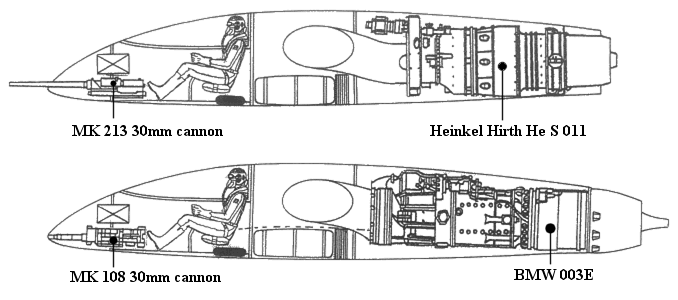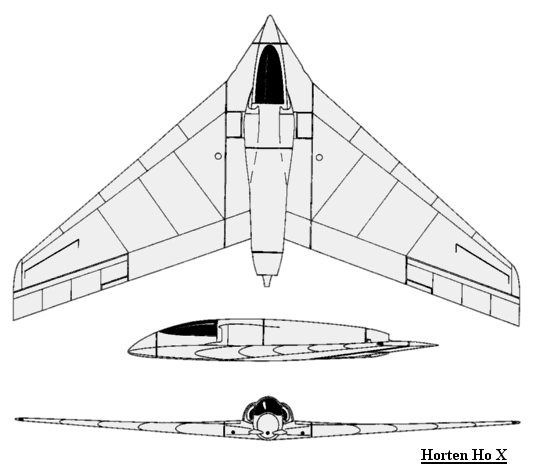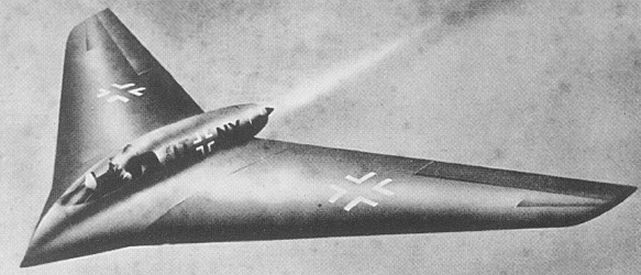| Span | Length | Height | Wing Area | Max Weight | Wing Loading | Ceiling | Range | Max. Speed |
| 14 m 45' 11" |
7.2 m 23' 8" |
2.3 m 7' 6' |
35 m² 376.7 ft² |
6075 kg 13393 lbs |
173.6 kg/m² 35.5 lbs/ft² |
15000 m 49212' |
2000 km 1243 miles |
1100 km/h 684 mph |
| There are no scale models currently of this aircraft |

Images above from Unknown #3 by J. Miranda and P. Mercado
 Due to the rapidly deteriorating
war conditions in Germany in the last months of WWII, the RLM (R
eichs luftfahrt- Ministerium, or German Air Ministry)issued
a specification for a fighter project that would use a minimum of strategic
materials, be suitable for rapid mass production and have a performance
equal to the best piston engined fighters of the time. The Volksjäger
(People's Fighter), as it became known as, was issued on September
8, 1944 to Arado, Blohm & Voss, Fiesler, Focke-Wulf, Junkers, Heinkel,
Messerschmitt and Siebel. Thenew fighter also needed to weigh no more
than 2000 kg (4410 lbs), have a maximum speed of 750 km/h (457 mph), a
minimum endurance of 30 minutes, a takeoff distance of 500 m (1604'), an
endurance of at least 30 minutes and it was to use the BMW 003 turbojet.
Due to the rapidly deteriorating
war conditions in Germany in the last months of WWII, the RLM (R
eichs luftfahrt- Ministerium, or German Air Ministry)issued
a specification for a fighter project that would use a minimum of strategic
materials, be suitable for rapid mass production and have a performance
equal to the best piston engined fighters of the time. The Volksjäger
(People's Fighter), as it became known as, was issued on September
8, 1944 to Arado, Blohm & Voss, Fiesler, Focke-Wulf, Junkers, Heinkel,
Messerschmitt and Siebel. Thenew fighter also needed to weigh no more
than 2000 kg (4410 lbs), have a maximum speed of 750 km/h (457 mph), a
minimum endurance of 30 minutes, a takeoff distance of 500 m (1604'), an
endurance of at least 30 minutes and it was to use the BMW 003 turbojet.
